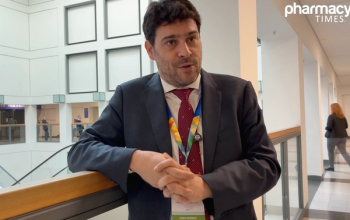
COVID-19 Has Significantly Impacted How, When Respiratory Syncytial Virus Spreads
Prior to the pandemic, the seasonality of respiratory syncytial virus followed a pattern; now, this pattern of disease spread has changed significantly.
As with other common viral respiratory viruses, the severity of respiratory syncytial virus (RSV) disease correlates with the viral load, explained Leah Smith, PharmD, BCPS, BCGP, during her presentation at the
RSV is a single-strand, enveloped RNA virus in the Pneumovindae family, Smith noted. Specifically, RSV binding into host cells is facilitated by 2 proteins: F protein and G protein. The role of the F protein is primarily fusion with the host airway cells, and G protein is involved with binding to ciliated cells in the airway between these 2 glycoproteins. Additionally, both proteins are associated with the 2 antigenic subgroups of RSV: RSV-A and RSV-B.
“Now, the F protein is highly conserved, and the G protein is where you see variability between RSV-A and RSV-B,” Smith said during the presentation.
Early in infection, dendritic cells migrate to the airway mucosa and are likely the primary antigen presenting cell, Smith explained. During the infection, macrophages isolated from the lower respiratory tract infection co-express RSV surface glycoproteins with stimulatory markers and cytokines indicating roles for these cells in the antigen presentation process.
“So what happens though is as the T cell immune response begins and is followed by CD4+ and CD8+ T cell response, that really is what mediates clearance of the virus from our body,” Smith said. “For older adults who have a reduction in the number of functioning T cells, this is why we think that they have a harder time clearing RSV infection.”
Smith went on to explain that the seasonality of RSV can also change depending on where patients live. Based on RSV incidence by week in 3 different cities in the United States, including Miami, New York, and Los Angeles, with the data averaged over 3 seasons well before the pandemic, the RSV season starts the earliest in Miami, followed by a peak in New York with a more typical fall and winter peak of disease. Then the LA the season starts much later in the year and lasts much longer.
“The seasonality varies depending on where you live in the country,” Smith said. “But COVID-19 has changed how everything is impacted. So, when we think about the non-pharmaceutical interventions that were in place over the last couple of years, whether it's been social distancing, mask wearing school closures, travel restrictions—all of those things that were implemented to limit the spread of COVID-19—had a significant impact on other respiratory viruses also, and, specifically, it impacted the spread of RSV.
“While those interventions were in place, the number of susceptible individuals continued to increase. So when you withdraw those interventions, you see a peak of disease potentially occurring. And then the longer you have those interventions in place, the likelihood of having an even larger peak happening is possible.”
Prior to COVID-19, the disease peaks in the winter, there is a low over the summer, and then there is an increase again in the fall when averaged across the United States, Smith explained. Yet, although in March 2020 when COVID-19 was declared and the seasonal peak of RSV was coming to an end, there wasn’t a corresponding rise in fall 2020 because of all the non-pharmaceutical interventions that were in place, according to Smith.
“Now you fast forward to 2021 season, and you see a peak of disease in the middle of the summer, which is truly unusual,” Smith said. “We really don't know how much COVID-19 has impacted RSV seasonality or when it will return to what a typical pattern is. But we do know that there's been a pretty significant impact. So we tend to think about RSV disease as a disease of younger children. But it truly is an illness of all ages—by the age of 2 years, most of us have been infected. And in fact, it's really the most common respiratory infection in children as we continue to age. The immune response or being infected with RSV does not give you lifelong immunity—you're continuously reinfected throughout life.”
Reference
Smith L. The Clinical Impact and Immunological Response of RSV. Presented at: APhA 2023 Annual Meeting & Exposition in Phoenix, AZ; March 26, 2023.
Newsletter
Stay informed on drug updates, treatment guidelines, and pharmacy practice trends—subscribe to Pharmacy Times for weekly clinical insights.























































































































































































































